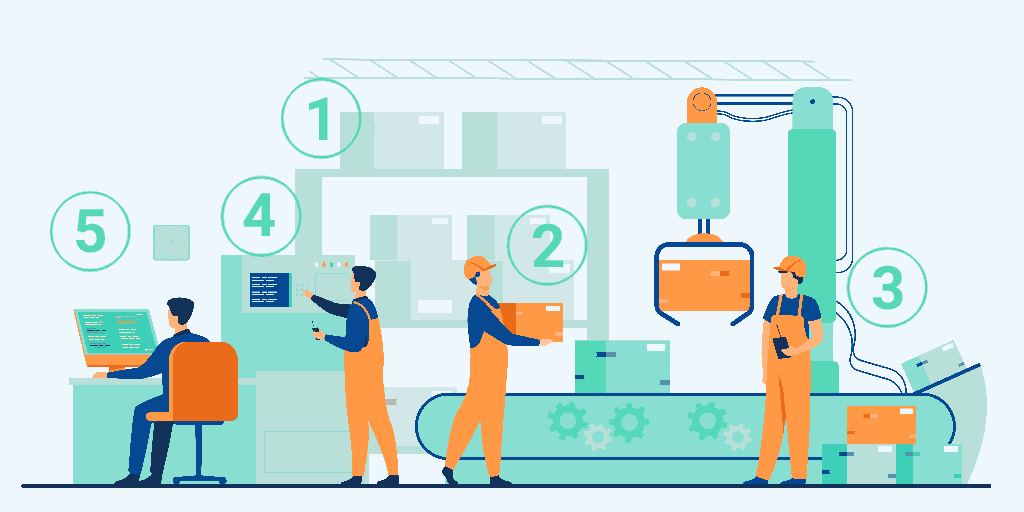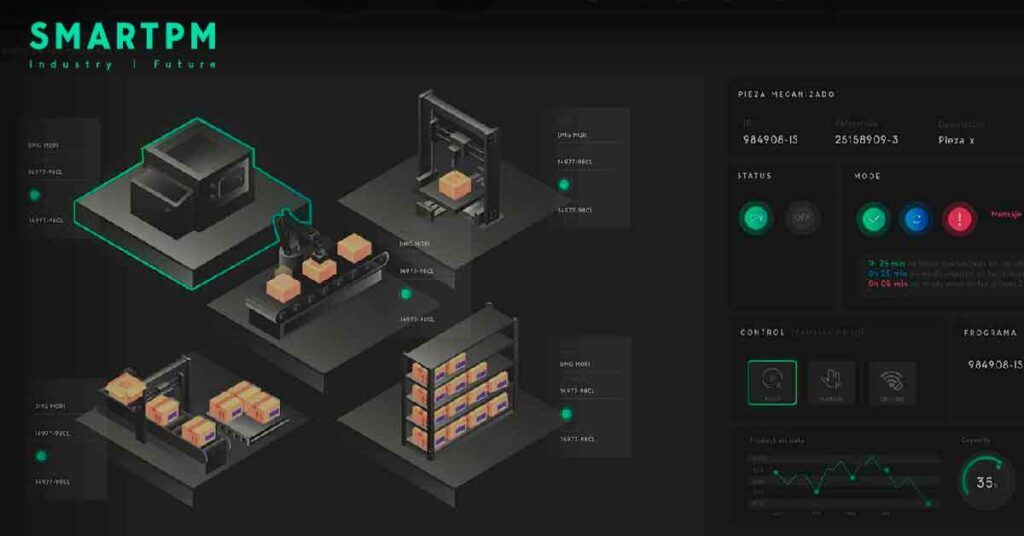If you feel that your workshop is in disarray or if you have limited visibility of what is going on in your workshop, stop and read this article. Having a system that provides real-time process information can help improve business productivity. In this post we discuss this, and other advantages offered by real-time visibility.

What is real-time process visibility?
Real-time process visibility means obtaining data of processes which are taking place at the moment, without delay. This makes it possible to make decisions and detect problems in a much more agile and dynamic way, as we will explain later.
There is a mantra in industry that goes: “what cannot be measured cannot be improved”. However, real-time process visibility goes far beyond that.
We are not talking about exporting data from a machine to an Excel to be analysed the day after and then realise (in hindsight) what the problems or deviations in production are. Obtaining, analysing and managing data in real time is a critical step in understanding processes and acting on them to address misalignments before they lead to problems, such as line stoppages or quality failures that impact productivity and profitability.
Today technology makes it possible to obtain the necessary information throughout the whole process and in an integrative way.
Many machines in the workshop are able to collect their own data but having independent isolated «islands» of information does not solve anything.
Storing a multitude of data without knowing what it is to be used for does not work either. Even when these hurdles are overcome, without a hardened organisation or a robust IT layer, it is difficult to achieve an adequate insight of processes.
The challenge is to obtain information throughout the whole process and in an integrative way, including machines, sensors, IT platforms (ERP, MES, PDM/PLM, etc.) so that action can be taken in real time.
Are your industrial processes really digitalised?
Viewing processes in real time is based on their digitalisation. At this point we need to differentiate between real digital processes and wannabe processes When we talk about real digitalisation of processes, we do not simply mean the elimination of paper-based information by scanning it, i.e. Digitisation, or capturing all kinds of data and storing it in the cloud without specific criteria.
Digitalisation demands the creation of a digitally equivalent process to the physical one, containing all relevant and manageable tasks taking place on the shop floor in real time. This allows for integrated management of data so that it can be feedbacked into the manufacturing process itself, making it more productive and therefore more profitable for the company.
Key benefits of real-time process visibility
1. Increased process productivity
Imagine that one of the machines on the line has lower productivity due to a misalignment with the tool warehouse.
Without real-time visibility, the issue would have to be detected, information collected manually and analysed in search of a solution. Once the correction is implemented, it would be necessary to wait until data is analysed and check that the decision taken has been appropriate. This process could take up to 2 to 3 days.
A production system with real-time data visualisation can make decisions automatically.
In a production system with capability to visualise data in real time, data can be collected, analysed and distributed in a quick and easy way to all decision-makers, or even have the system make those decisions automatically.
In the above example, the system could detect in real time that there is a problem with the machine, find a solution within minutes, and immediately see if the issue is resolved. If it cannot be solved automatically, it could arrange the information in such a way that decision-making by the responsible person is quicker and easier.
Time saving in decision making and result checking leads to a significant increase in productivity. Furthermore, having data also enables the development of predictive actions, i.e. those leading to anticipating situations that can be assessed and prevented before they occur.
2. Improved production planning capacity
Obtaining good insight of production is an important tool to understand the operational capacity of the plant, which is necessary for production planning and upscaling to avoid delivery delays.
Real-time visibility provides an insight into the process as a whole, obtaining information on the «journey» made by each part, including lead times, machine times, etc., and enables better and more efficient production planning. In addition, it boosts the ability to budget and set new production commitments based on real data and not so much on «intuition».
3. Integration of information sources for the whole organisation
For real-time data to be used efficiently, this information needs to be shared and integrated with the rest of the system in an appropriate way. This makes it easier for the whole organisation to share the same data and provides a more comprehensive view of the entire workshop operation. Thus, internal coordination is fostered, and chaos is eliminated from the shop floor.
Digitalising a process is not simply removing paper-based information and storing data.
Technology makes it possible to collect and consolidate large amounts of data automatically. With all this information, trends and patterns can be created to be used as a model, so that we can detect possible deviations during production and apply preventative measures in a dynamic way.
As a result, not only unplanned downtime (by anticipating issues) but also planned downtime are reduced, as we can improve predictive maintenance planning.
4. Reduced operating costs
The longer unplanned stops are, the greater the losses. Therefore, being able to anticipate problems has a direct impact on the company’s bottom line, both avoiding downtime itself and reducing the production of defective items.
Real-time visibility makes it possible to identify errors, understand their causes and therefore resolve them without impacting the production schedule.
5. Better positioning for continuous improvement
As we mentioned at the beginning, what cannot be measured cannot be improved. Real-time visibility systems lead to more accurate and consistent data collection, which is of great help in continuous improvement. For example, they make it possible to detect the location of material loss, non-productive movements, machine downtime, etc. And not only that, having the right data makes it possible to automate operations and decision-making, thus boosting agility, time, quality, etc.
Therefore, it is possible to detect which specific areas of the workshop need to be optimised, improve the distribution of resources (including personnel), optimise machine parameter setting for the machines, etc.
Time to improve your production system

SMARTPM can help you with our MIC automation platform for the machining industry. MIC allows you to centralise the monitoring and tracking of your operations in real time, helping you identify low added value operations, improve visibility of your teams and workflows, and have clear traceability of your products, to name just a few of its capabilities.
With MIC, you can integrate the information managed by other IT solutions you use, giving you a truly global insight of your processes so you can manage your production more dynamically in real time.
If you want to know more about our MIC platform, please do not hesitate to contact us.
